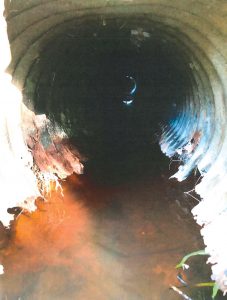Posted by Greg Ellison
The board of directors agrees to spend more than $ 1.2 million on two projects
(Feb.25, 2021) With the goal of improving drainage and continuing annual maintenance of the bulkheads, Ocean Pines’ board of directors on Saturday approved more than $ 200,000 to fix faulty underground pipelines and just over $ 1 million Dollars for repairing bulkheads.
General Manager John Viola said the two public works investments include $ 1,095,000 for Fisher Marine to replace 3,000 liner feet of vinyl bulkhead at $ 365 per foot.
“This is basically the same request as last year,” he said.
Fisher Marine’s quotation, which was the lowest of three requested bids, is approximately $ 502,000 less than what is earmarked for bulkhead repairs for FY 21-22.
Bulkhead work is for Pintail Drive lots 8-50 and Crab Cay Court lots 3-12.
“We have made similar amounts over the past few years,” he said.
The board also approved the spending of $ 207,167 on Pelican Underground in Louisiana to repair faulty corrugated iron pipes through a trenchless rehabilitation method.
According to Viola, the CIPP (cured-in-place pipe) process involves inserting liners that contain an inflatable, epoxy-saturated felt tube that hardens in a day.
“The main pipes here that we are looking at are the ones that cross Ocean Parkway,” he said.
Once the resin has cured, it forms a tight, seamless seal that has proven to be less expensive and less disruptive than replacing the entire pipe.
Director Frank Daly said the $ 236 per foot price for the CIPP process is a far cry from the roughly $ 1,000 per foot previously paid to replace damaged pipe sections.
“Is this like a test run to see if the five-mile-long underground infrastructure we have is fit for purpose on a planned basis?” he asked.
Images courtesy of the Ocean Pines Association
Ocean Pines is investigating the on-site cured pipe process to repair rusted and faulty corrugated iron pipe similar to the one pictured.
Viola replied that the CIPP method is a good practice that has been used in other regions for years.
“This is a saving of well over 50 percent compared to the traditional method we used,” he said.
Viola said the first job would involve lining eight sections of pipeline between 15 and 36 inches in size.
“We want to see how that works,” he said. “It’s worth it in my head.”
Viola said if the first round of repairs goes like this, planned additional sections could be proposed later this year.
OPA President Larry Perrone said both the contractor and the product manufacturer stand behind the work.
“We have a one-year contractor guarantee but a 50-year guarantee on the feed,” he said.
According to Viola, the useful life of the epoxy liners is in many cases even longer.
“The product is designed to last 50 years, if not 100 years,” he said.
Daly said the potential cost savings are welcome news.
“This is some of the better news we’ve heard about drainage in a long time,” he said.
Daly said if the new approach proves successful, which would incur a large expense even at the reduced rate, the board should consider creating a funding program similar to Schotten to carry out subsequent pipe repairs.
“People need to be aware of what we are dealing with this infrastructure,” he said.
The board unanimously approved the approval of both investments for the next fiscal year.


Comments are closed.